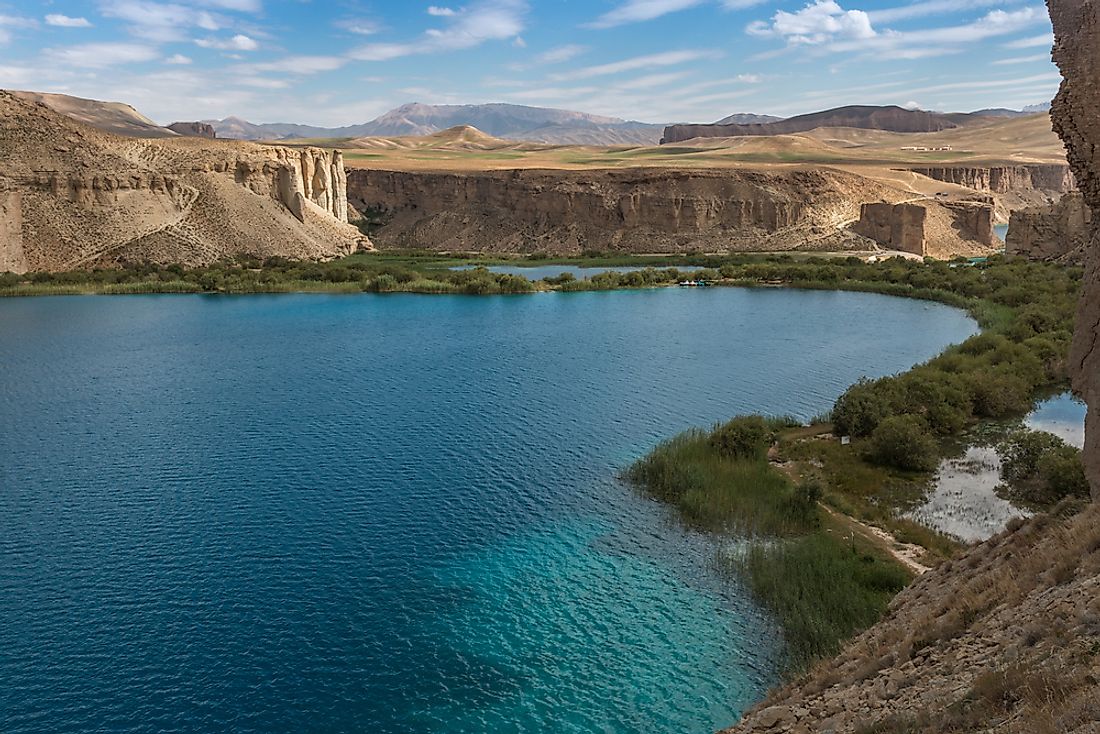Ecological Regions Of Afghanistan

Afghanistan is a country in Central Asia. Its total land area is around 252,000 square miles, and features spectacularly high mountainous landscapes, and a collection of forests, woodlands, and deserts. The biodiversity of flora and fauna is seen as livelihood resources for the majority of the Afghan population. In 1992, to prevent further biodiversity loss, the Afghanistan government signed and ratified the UN Convention on Biological Diversity (UNCBD).
Despite the fact that the country has been in turmoil for close to forty years, its government is seeking to do its share in identifying environmental issues within the country. Government agencies had been making inroads in addressing the problems of drought and its effects on agriculture. Other issues include desertification and natural resources loss. Government agencies have encouraged the local populace to participate in the conservation of the ecological resources of the country.
Afghanistan and its Ecosystems
Afghanistan is a landlocked country with varying topography, from vast plains to mountainous regions with great rivers flowing through its numerous landscapes. Its climates are as varied as its topography of mountains, deserts, forests, and grasslands. Its natural resources are rich and varied as well ranging from coal, oil, and gas to precious stones and rare earth elements.The following is a list of the country’s ecological regions.
East Afghan Montane Conifer Forests
The East Afghan montane conifer forests at 6,562 to 10,827 feet in elevation feature temperate coniferous forests. Conifer pines thrive here such as firs, cedars, cypresses, spruce, juniper, pine, yew, and redwood. Understory vegetation include herbs and grasses. Climate is marked by cool moderate winters and warm summers with rainfall. Endangered species in the region include the falcon, vulture, and snow leopard.
Gissaro-Alai Open Woodlands
The Gissaro-Alai open woodlands lie in a terrestrial biome that features temperate grasslands, savannas, and shrublands, having alternating warm summers and freezing winters. Grass, trees, shrubs, heaths, and pastures mark the landscape in these open woodlands. Fauna consists of ungulates, bears, snow leopard, eagles, and birds. Conservation groups see human impact and water diversion projects as a threat to the region.
Ghorat-Hazarajat Alpine Meadow
The Ghorat-Hazarajat alpine meadow features montane grasslands and shrublands above the treeline. This ecoregion is situated in the highlands of the country. Climate is marked by frist and drought but is relieved by snowmelt after the winter season. Flora consists of willows, sea buckthorn and desert plants. Birds of different sizes, reptiles, rodents, canidae, amd other wild mammals inhabit the area.
Hindu Kush Alpine Meadow
The Hindu Kush alpine meadow features montane grasslands and shrublands in an area covering around 10,900 square miles. It is marked by alpine meadows. Forests of birch trees dominate the surrounding area. Climate is marked by cold temperatures and heavy snowfall that verges just below glaciers. Endemism is common among the high altitude plants situated at 9,800 to 13,100 feet. Sheep and wild cats thrive in the region.
Karakoram-West Tibetan Plateau Alpine Steppe
The Karakoram-West Tibetan plateau alpine steppe features montane grasslands and shrublands. It is within a 55,328 square-mile area with around 45 mammal species thriving within its expanse. The avian community consists of around 172 species. Junipers, grasses, and herbaceous plants thrive in this ecoregion. Predators are mainly bears, snow leopards, raptors, and vultures. Sheep, goats, and smaller avian species also abound. Conservation efforts have resulted in the establishment of three national parks.
Other Ecoregions in Afghanistan
The following ecoregions (and their biomes) are also located in Afghanistan. They include the Northwestern Himalayan alpine shrub and meadows (montane grasslands and shrublands), the Pamir Alpine desert and tundra (montane grasslands and shrublands), the Sulaiman Range alpine meadows (montane grasslands and shrublands), the Afghan Mountains semi-desert (deserts and xeric shrublands), the Badkhiz-Karabil semi-desert (deserts and xeric shrublands), the Baluchistan xeric woodlands (deserts and xeric shrublands), the Central Afghan Mountains xeric woodlands (deserts and xeric shrublands), the Central Persian desert basins (deserts and xeric shrublands), the Paropamisus xeric woodlands (deserts and xeric shrublands), and the Registan-North Pakistan sandy desert (deserts and xeric shrublands).
Ecological Regions Of Afghanistan
| Rank | Ecoregion | Biome |
|---|---|---|
| 1 | East Afghan Montane Conifer Forests | Temperate Coniferous Forests |
| 2 | Gissaro-Alai Open Woodlands | Temperate Grasslands, Savannas, and Shrublands |
| 3 | Ghorat-Hazarajat Alpine Meadow | Montane Grasslands and Shrublands |
| 4 | Hindu Kush Alpine Meadow | Montane Grasslands and Shrublands |
| 5 | Karakoram-West Tibetan Plateau Alpine Steppe | Montane Grasslands and Shrublands |
| 6 | Northwestern Himalayan Alpine Shrub and Meadows | Montane Grasslands and Shrublands |
| 7 | Pamir Alpine Desert and Tundra | Montane Grasslands and Shrublands |
| 8 | Sulaiman Range Alpine Meadows | Montane Grasslands and Shrublands |
| 9 | Afghan Mountains Semi-Desert | Deserts and Xeric Shrublands |
| 10 | Badkhiz-Karabil Semi-Desert | Deserts and Xeric Shrublands |
| 11 | Baluchistan Xeric Woodlands | Deserts and Xeric Shrublands |
| 12 | Central Afghan Mountains Xeric Woodlands | Deserts and Xeric Shrublands |
| 13 | Central Persian Desert Basins | Deserts and Xeric Shrublands |
| 14 | Paropamisus Xeric Woodlands | Deserts and Xeric Shrublands |
| 15 | Registan-North Pakistan Sandy Desert | Deserts and Xeric Shrublands |











